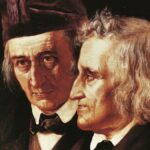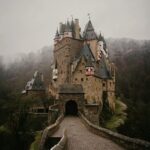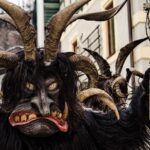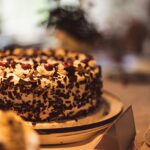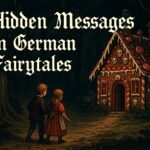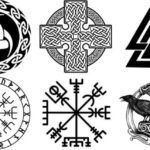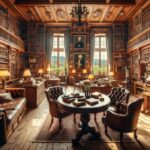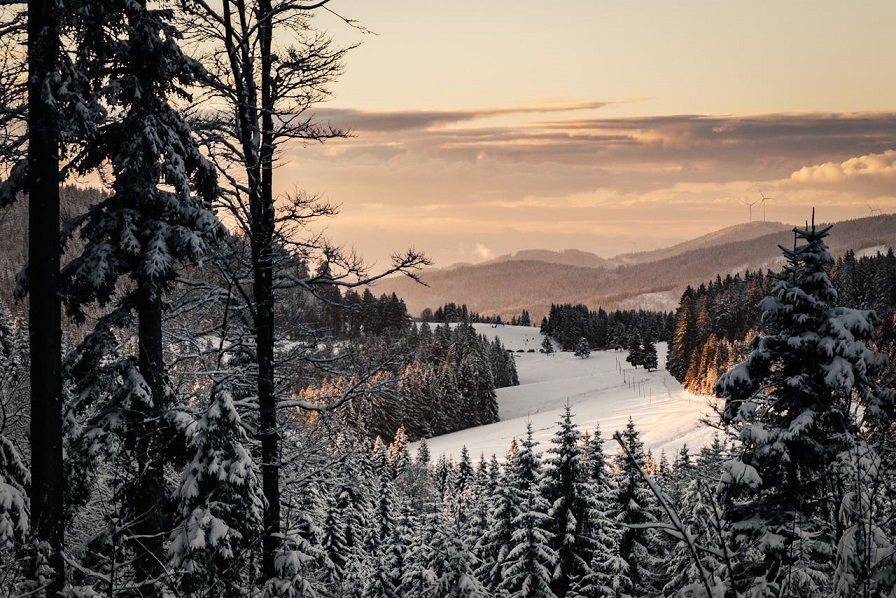
The Black Forest (Schwarzwald) is a land of towering pines, misty valleys, and an eerie, almost supernatural atmosphere. Stretching across southwestern Germany, this dense and mysterious woodland has been the setting for some of the most haunting German fairy tales, myths, and folklore. It is no wonder that the Brothers Grimm found inspiration here, weaving the forest’s dark allure into their iconic stories.
But the Black Forest is more than a backdrop for fairy tales. It has profoundly shaped German culture, traditions, and identity. From ancient pagan beliefs and medieval superstitions to its lasting impact on literature and tourism, this legendary forest continues to captivate both locals and travelers. This article explores how the Black Forest has influenced German mythology, folklore, and cultural heritage for centuries.
The Black Forest: A Place of Myth and Mystery
For centuries, the Black Forest has been regarded as a place of magic, mystery, and danger. Its thick, impenetrable woods, deep ravines, and hidden caves gave rise to folktales of witches, spirits, and forest-dwelling creatures.
Ancient Germanic tribes worshipped nature spirits in these woods, believing the forest was home to gods, elves, and spectral beings. Later, in the Middle Ages, these beliefs transformed into legends of haunted castles, cursed villages, and mischievous goblins. Many of these stories were passed down through generations and eventually recorded by the Brothers Grimm, embedding the Black Forest in the heart of German storytelling.
The Black Forest in German Folklore and Fairy Tales
1. The Brothers Grimm and the Dark Fairy Tale Influence
The Black Forest plays a central role in some of the most famous Grimm’s fairy tales, including:
- Hansel and Gretel: A tale of abandoned children lost in a dark forest, encountering a wicked witch with a hunger for human flesh.
- Little Red Riding Hood: A young girl strays too far into the woods and meets the cunning wolf, an allegory of the dangers lurking in the deep forest.
- Rumpelstiltskin: The trickster-like figure of Rumpelstiltskin reflects the folklore of supernatural beings who inhabit the Black Forest’s shadows.
These stories, often darker than their modern retellings, reflect age-old fears of the wilderness, where danger could be real or supernatural. The Black Forest’s twisting paths and thick canopy provide the perfect setting for these cautionary tales.
2. Supernatural Beings of the Black Forest
The Black Forest is rich in mythical creatures and spirits, each tied to local folklore:
- The Erdmannleins: Small, gnome-like beings who live underground and only appear to those they trust. These creatures are said to be kind but mischievous, similar to leprechauns.
- The Mummelsee Water Spirit: According to legend, the Mummelsee, a lake in the Black Forest, is home to a mysterious water spirit who lures unsuspecting travelers into its depths.
- The Headless Horseman of the Black Forest: A terrifying ghostly figure, doomed to wander the woods as punishment for past sins.
These tales serve as cautionary stories, warning against venturing too far into the unknown or disrespecting the supernatural forces of nature.
How the Black Forest Influenced German Culture
1. Cuckoo Clocks and Handicrafts
The Black Forest is not only known for its legends but also for its craftsmanship. Cuckoo clocks, one of Germany’s most famous cultural exports, originated in the Schwarzwald region in the 18th century. These handcrafted wooden timepieces often depict scenes of rural life and fairy tale characters, a direct influence of the forest’s storytelling traditions.
Other regional handicrafts, such as wood carving and traditional Schwarzwälder Trachten (Black Forest costumes), preserve the area’s folk heritage. Even today, visitors can watch artisans crafting clocks in traditional workshops.
2. Pagan Rituals and Christian Traditions
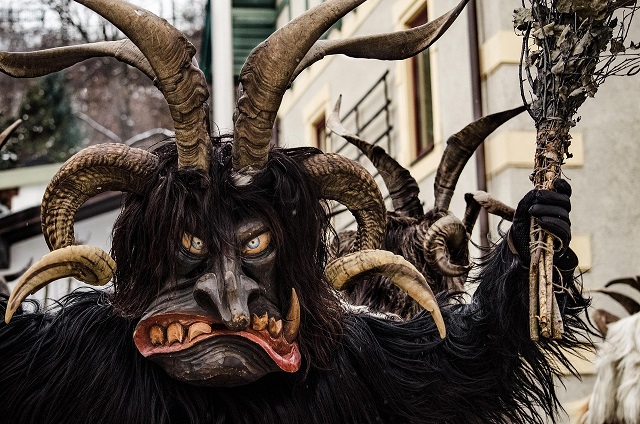
The Black Forest has long been a place of spiritual significance. Before Christianity spread through Germany, the region’s early inhabitants worshipped pagan gods and forest spirits. Ancient rituals honoring the changing seasons and fertility gods took place in the deep woods.
With the arrival of Christianity, many of these traditions were adapted into religious festivals. The Walpurgisnacht (Walpurgis Night), celebrated on April 30, blends pagan and Christian influences. On this night, people light bonfires, dance, and reenact stories of witches and spirits—a nod to the region’s mystical past.
3. The Black Forest in Modern Literature and Film
The dark and mysterious aesthetic of the Black Forest continues to inspire authors and filmmakers. German Gothic literature, such as the works of E.T.A. Hoffmann, often features eerie forests as settings for supernatural events. More recently, filmmakers have drawn on the Black Forest’s legend-rich history to create horror films and fantasy stories that evoke the same sense of mystery.
Even Hollywood has taken notice. The forest’s eerie ambiance appears in movies like Snow White and the Huntsman and modern adaptations of Grimm’s fairy tales, proving that the Black Forest’s influence extends far beyond Germany.
Visiting the Black Forest: A Mythical Experience
For those who want to experience the magic of the Schwarzwald, there are countless places to explore:
- Triberg Waterfalls: The highest waterfalls in Germany, surrounded by dense forest that feels like stepping into a fairy tale.
- Mummelsee Lake: A stunning alpine lake linked to the legend of the water spirit.
- Schiltach and Gengenbach: Quaint towns with traditional half-timbered houses that look straight out of a Grimm fairy tale.
- Ravenna Gorge: A breathtaking ravine, often shrouded in mist, with a railway bridge that adds to the region’s mystical atmosphere.
Visitors can also hike through dense fir forests, visit centuries-old monasteries, and stay in rustic lodges that embrace the spirit of the Black Forest.
Want to Explore More About German Folklore?
Dive deeper into Germany’s myths and legends:
- Germany’s Pagan Past: How Ancient Germanic Tribes Lived and Worshipped
- Hidden Messages in German Fairytales
- German Fairy Tales: How Brothers Grimm Shaped World Literature
- The Most Haunted Places in Germany: Castles, Ghosts, and Legends
- German Superstitions and Folklore: Unusual Beliefs from the Past to the Present
- The German Witch Hunts: A Dark Chapter in European History
- Why Do Germans Love Garden Gnomes? – Discover the cultural roots of Germany’s love for garden gnomes, from folklore to kitsch to national pride.
